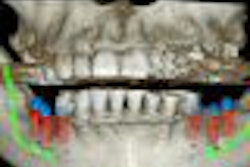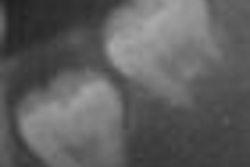Panoramic radiography is limited in its ability to diagnosis sinus disorders prior to implant surgery, and CT remains the most effective diagnostic tool in these cases, according to a study in Oral Medicine, Oral Pathology and Oral Surgery (July 2010, Vol. 15:4, pp. e611-615).
Researchers from Madrid Hospital and Montepríncipe University Hospital conducted a retrospective study of 152 patients who were seeking dental implants and subsequently evaluated 42 patients (average age of 59.8) who had abnormal sinuses. In addition to an evaluation of their medical history, patients also underwent a clinical exam, panoramic radiographs, and CT study.
Prior respiratory disorders were found in 52% of the patients, and 57% presented with dental disorders, the researchers reported. With regard to wound type, 73% were mucosal hyperplasia and 27% were mucous cysts.
Of the 56 sinuses affected, only 29% were diagnosed using panoramic radiographs.
"In this study, the diagnostic capacity of panoramic radiography was determined to be 28.57%, in most cases enabling the presumptive diagnosis of mucous cysts," the researchers wrote. "This percentage, although considerable, is limited to the diagnosis of mucosal hyperplasia, as they are smaller than mucous cysts and due to the overlapping of anatomical structures. ... Given these limitations, CT represents the most effective diagnostic testing available, due to its panoramic, axial, and transverse scans, offering a spatial view of these alterations as well as their morphology."
Copyright © 2010 DrBicuspid.com



















